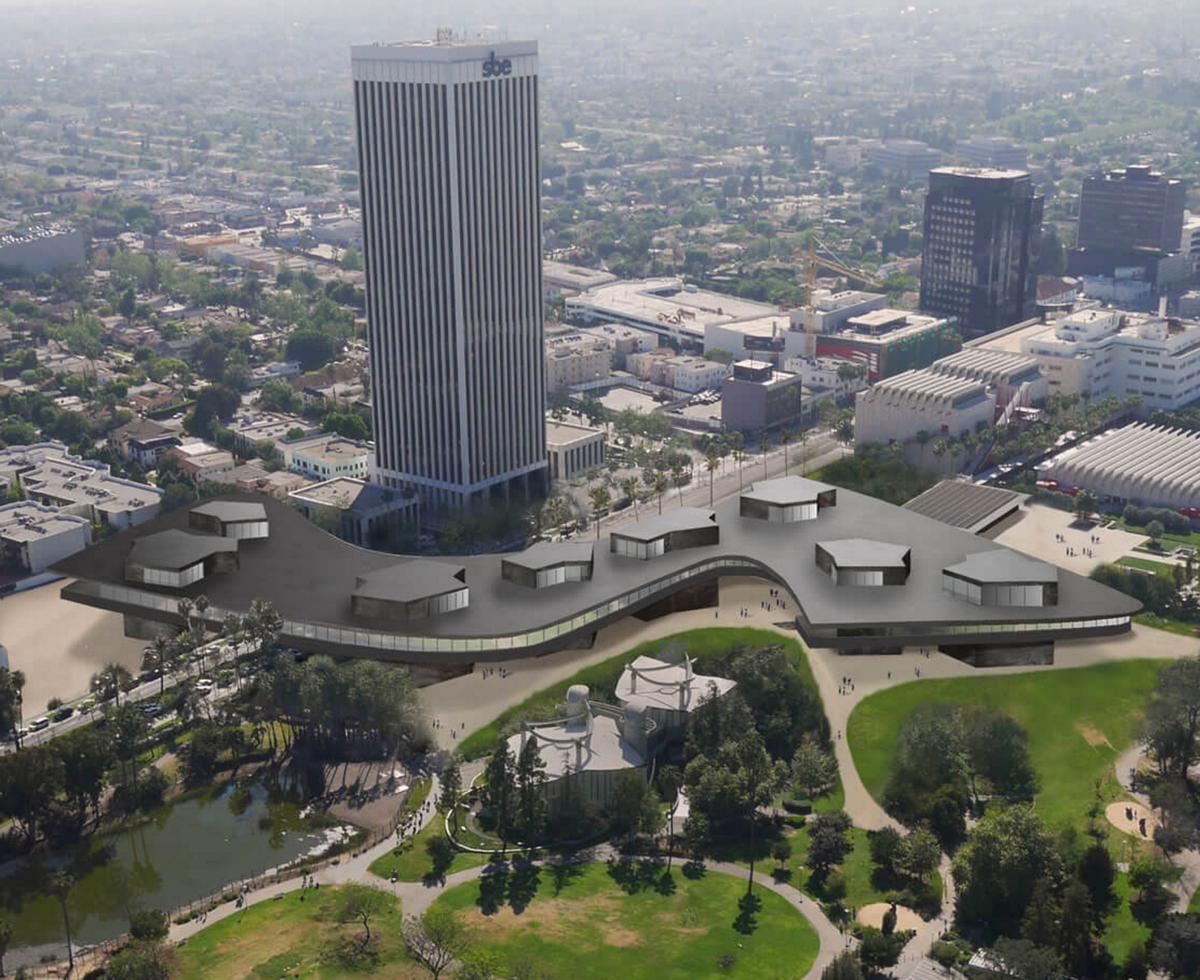Pritzker Prize-winning architect Peter Zumthor has told CLAD that his proposed redevelopment of the LA County Museum of Art (LACMA) will create a “sacred, sublime kind of experience.”
“You’ll have this almost sacred, sublime kind of experience, but I would also like to accommodate the profane, the dirty, the normal, the everyday”
– Peter Zumthor
In an exclusive interview during a recent trip to London, Zumthor explained his vision for the project.
“The museum is not organised in timelines, periods or geographical regions,” he said. “It’s organised like a forest with clearings inside, where we have free choice to go to this clearing, or to the next. I would like to allow an experience of art where people can go and look at the art without didactics, without premature explanations, and make their own experience.”
The project will see four of LACMA’s deteriorating structures replaced by the new Zumthor-designed building, which will house the museum’s permanent collection of historic and contemporary art. Eight semi-transparent pavilions will support an elevated, organically-shaped main exhibition level, with access points to the surrounding gardens.
“The museum is open to the outside; this is very important,” Zumthor told CLAD. “You’ll have this almost sacred, sublime kind of experience, but I would also like to accommodate the profane, the dirty, the normal, the everyday.
“You start off down on the ground – this is normal city life – then as you go up you are received in a beautiful big palace for the people. From there you can go to the clearings, and that’s where you have the most intimate and maybe more private experiences of art.”
Zumthor highlighted the Palazzo Fortuny art museum in Venice as an example of the qualities he is aiming for with his design, which he summarised as “a rich atmosphere, historic density and material presence”.
The architect also revealed that he is working on new images of LACMA to illustrate his proposed design, adding that the “commercial-looking” visualisations released in August were created for an environmental review only.
“They were conventional renderings, which I personally don’t like so much,” he explained, adding that his studio is currently working on photos taken from models which are prepared especially for the purpose. “The models allow us to take pictures with natural daylight, the light of the sun, which makes a lot of difference,” he said. “These will explain the building better.”
Speaking about his architectural philosophy, Zumthor argued he aims to provoke emotions with his designs. He said: “I love buildings. When I look back on my life I love the buildings that speak to me by means of their atmospheric qualities, a feeling of history, of being complete. I want to make buildings which have the capacity to be loved, that’s all.
“I’m extremely sensitive to things that don’t work. Many people see what’s ugly and doesn’t work in the world, but I have skills and talent [to design things that do work]. That’s a gift.”
An extensive interview with Peter Zumthor will be featured in the next issue of CLADmag. Meanwhile his long-running work on Norway’s National Tourist Route is featured a in the new issue of the magazine, which can now downloaded as a PDF or read on digital turning pages.

The project will see four of LACMA’s deteriorating structures replaced by the new Zumthor-designed building, which will house the museum’s permanent collection of historic and contemporary art / LACMA